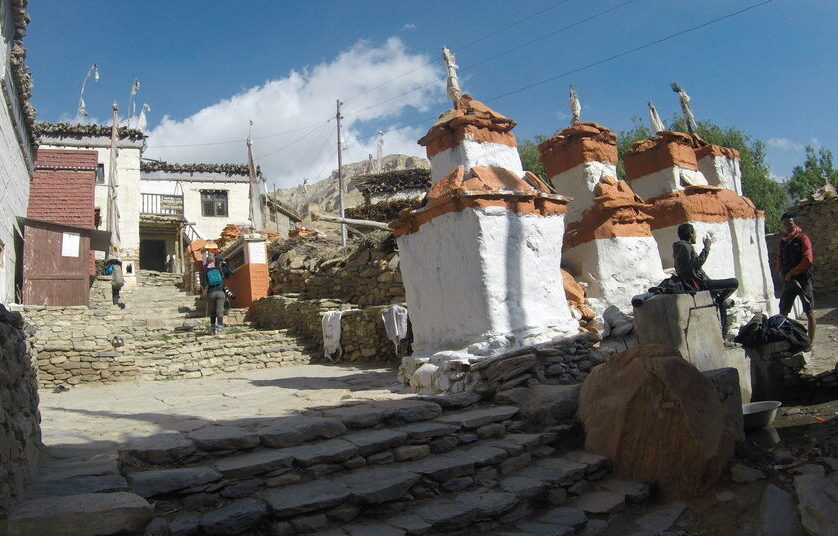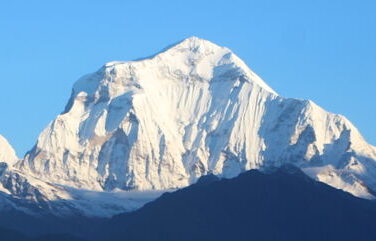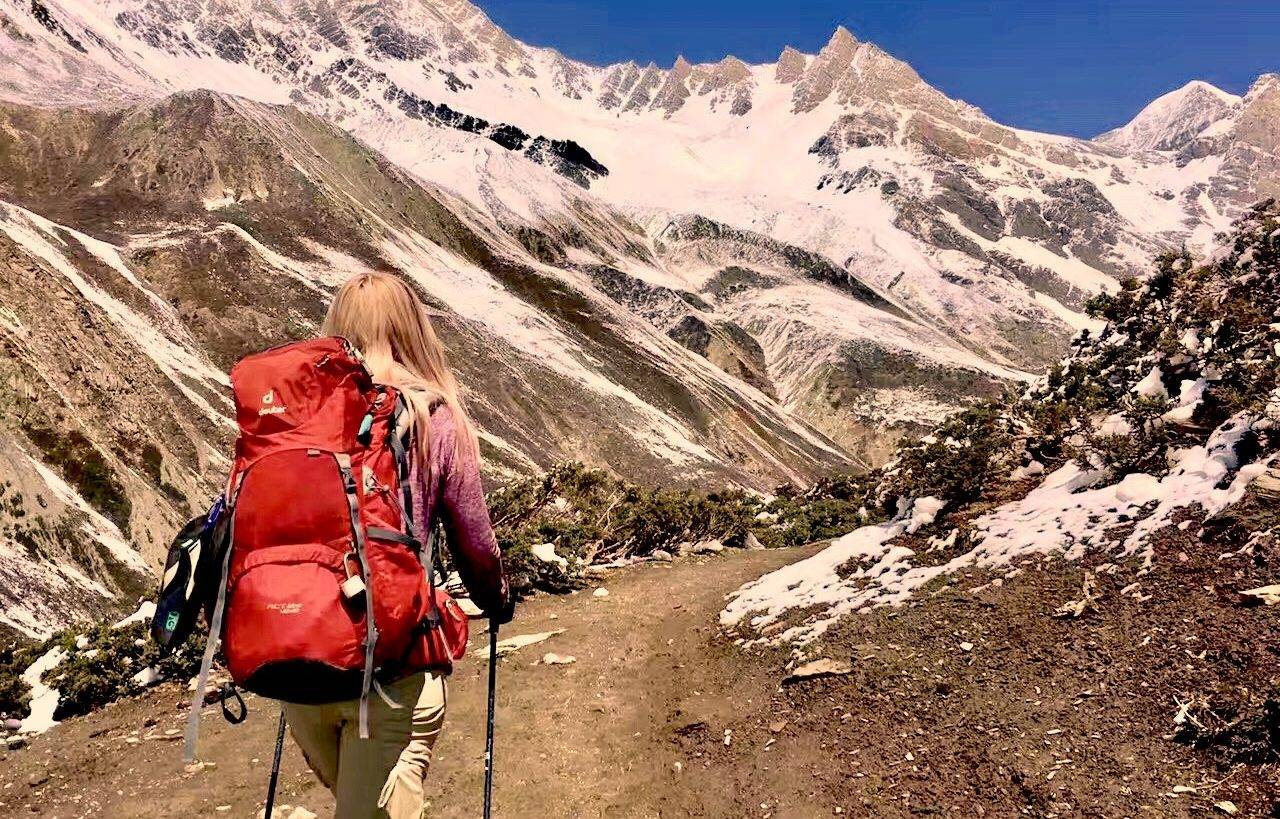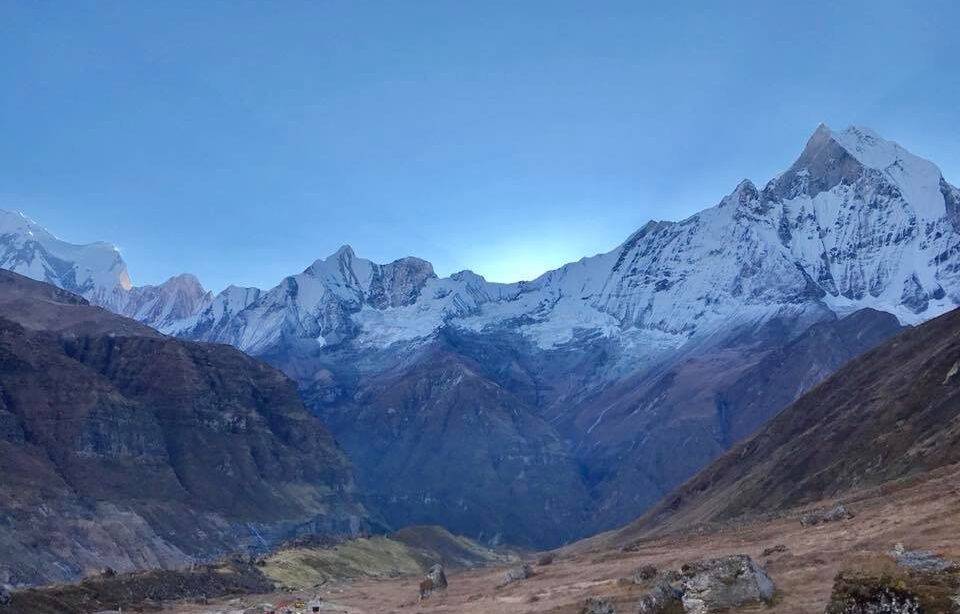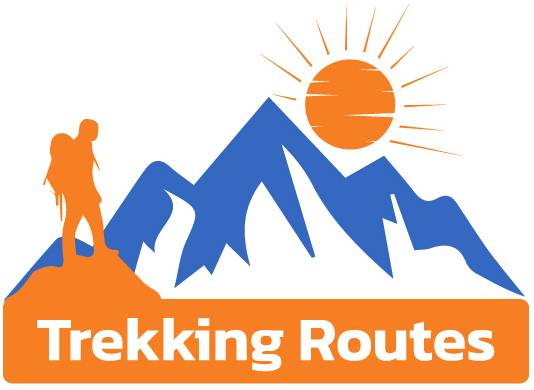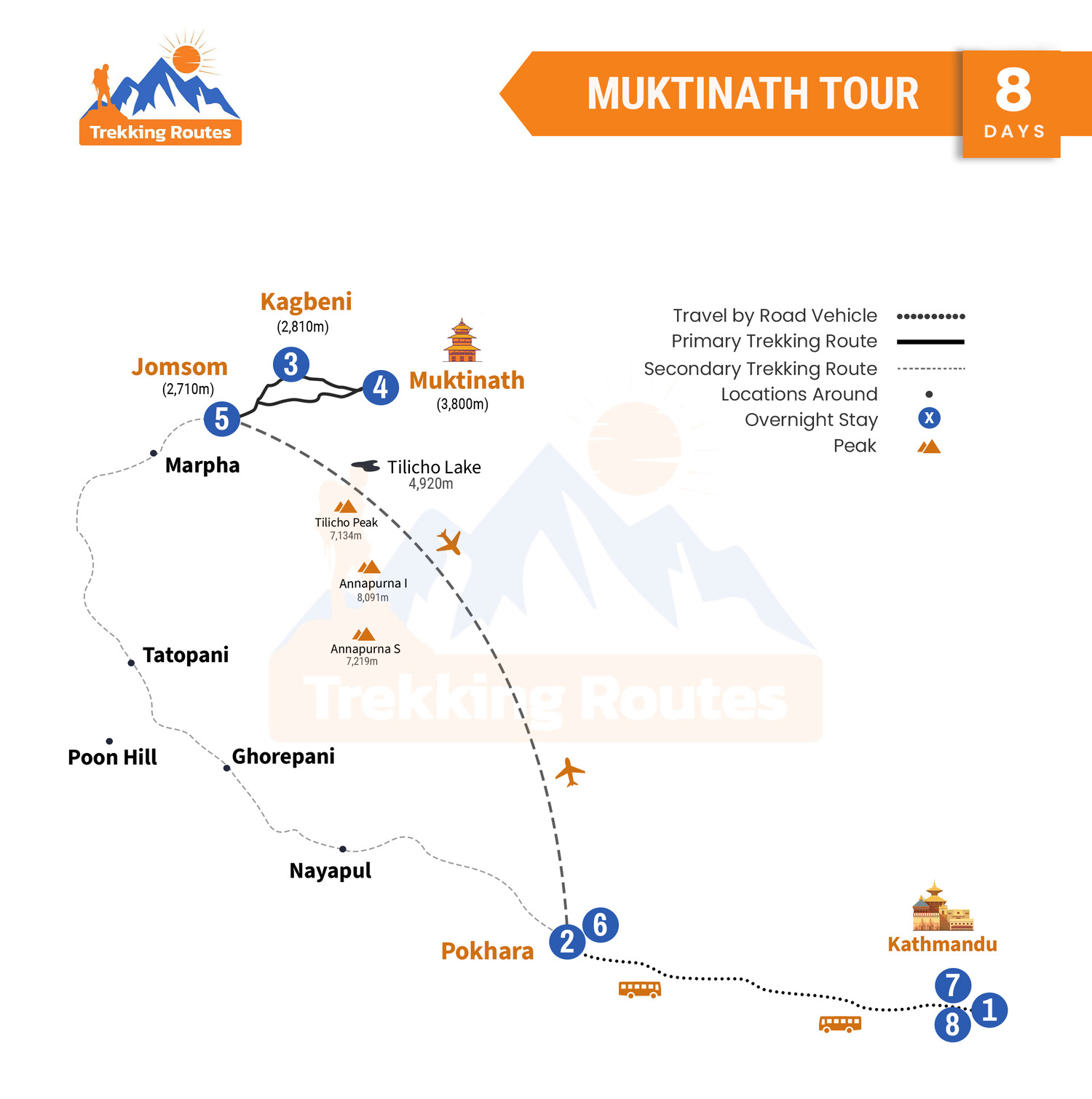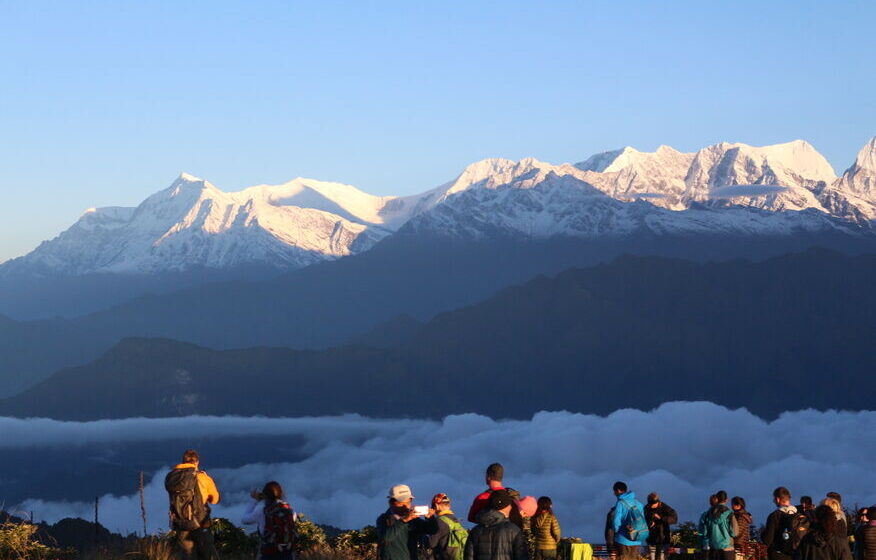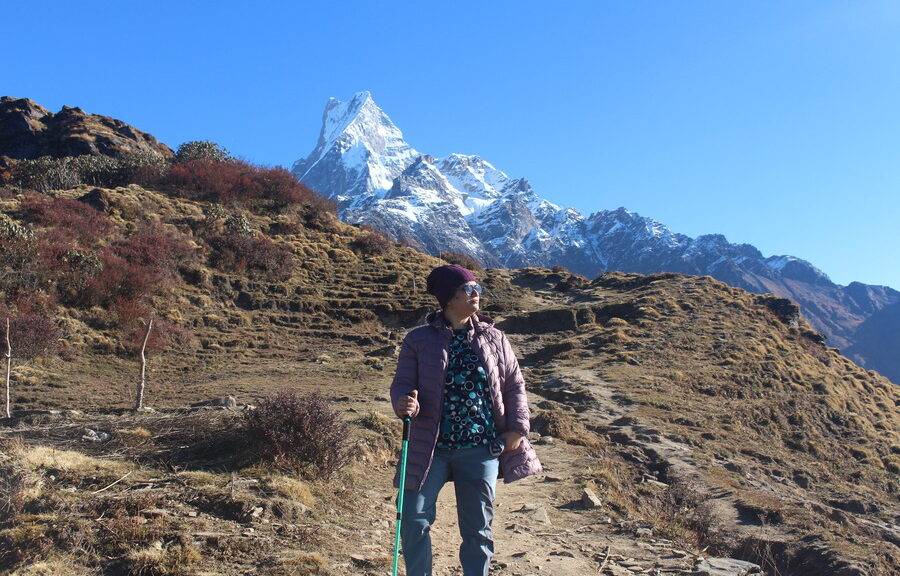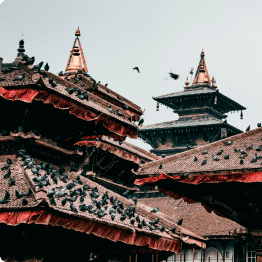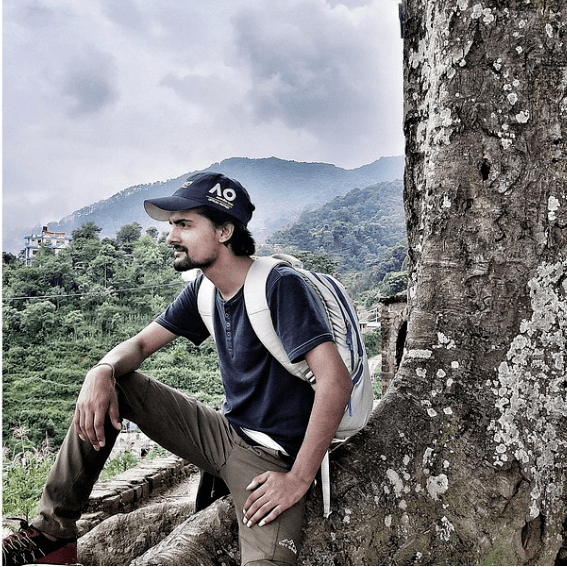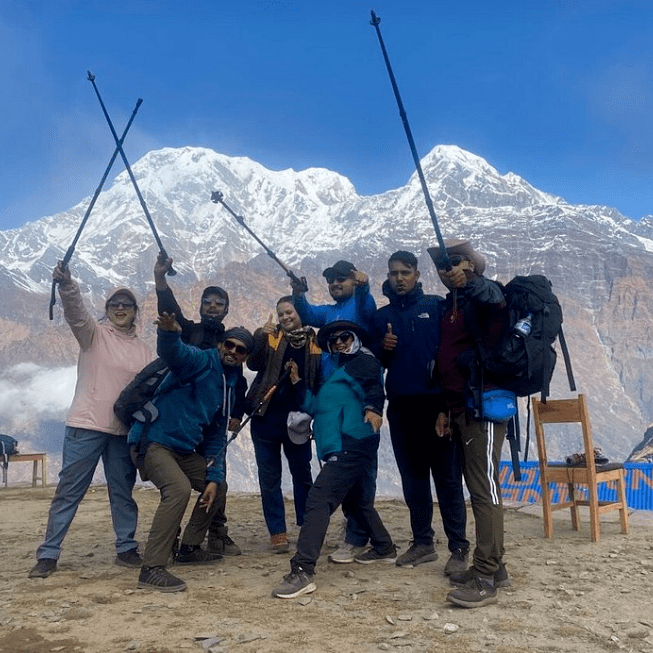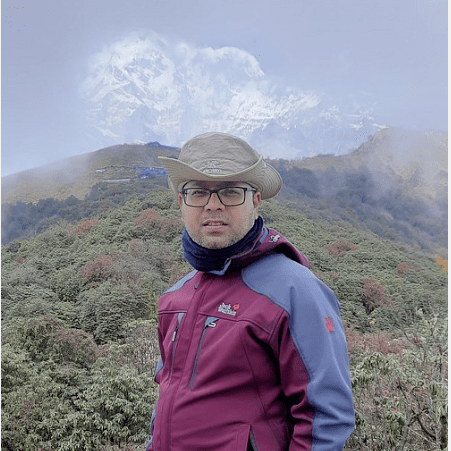Trekking Routes and Alternatives
Jomsom-Muktinath Trek (Standard Route)
This is the most common route, starting from Jomsom and leading to Muktinath. This trek is relatively short, taking 4-5 days, and is suitable for beginners. The trail passes through Kagbeni, a gateway to the Upper Mustang region, offering stunning views of the Nilgiri and Dhaulagiri ranges. The landscape is diverse, ranging from lush river valleys to the stark, arid terrain characteristic of the trans-Himalayan region.
Annapurna Circuit with Muktinath Extension
For those seeking a more challenging and comprehensive trekking experience, the Annapurna Circuit with an extension to Muktinath is ideal. This trek typically takes 18-21 days and covers a wide range of landscapes, from subtropical forests to high alpine terrain. The highlight of this trek is crossing the Thorong La Pass at 5,416 meters, one of the highest trekking passes in the world, before descending to Muktinath.
Upper Mustang Trek via Muktinath
This trek offers an in-depth exploration of the Mustang region, an area known for its stark beauty and preserved Tibetan culture. The Upper Mustang trek typically takes 14-17 days and includes a visit to Muktinath. The trail passes through ancient monasteries, caves, and remote villages, offering a glimpse into a way of life that has remained unchanged for centuries. This trek requires a special permit due to its restricted area status.
Accommodation and Dining
Teahouse Accommodation
During the trek, you will stay in teahouses, which are basic lodges providing essential services to trekkers. Teahouses offer simple rooms, usually with twin beds and shared bathrooms. In some villages, you may find rooms with attached bathrooms, though these are less common. The teahouses are a great way to experience local hospitality and meet fellow trekkers. The communal dining areas are often warm and cozy, with a fireplace at the center, making them a perfect place to relax after a day of trekking.
Dining Options
Teahouses typically offer a menu with a variety of dishes, including traditional Nepali meals, such as dal bhat (rice with lentil soup and vegetables), as well as international options like pasta, noodles, and pancakes. Fresh vegetables may be limited at higher altitudes, so the menu might be simpler as you ascend. It’s advisable to eat vegetarian meals while trekking, as meat is scarce and often not fresh in remote areas. Tea, coffee, and other beverages are readily available, and it’s important to stay hydrated by drinking plenty of fluids.
Food Hygiene and Safety
While dining in teahouses, it’s important to be mindful of food hygiene to avoid any health issues. Stick to freshly cooked meals and avoid raw vegetables and unpeeled fruits. It’s also recommended to bring a reusable water bottle with a filter or purification tablets to treat water, as bottled water is expensive and contributes to plastic waste. Drinking boiled water, tea, or hot lemon is a safe and eco-friendly option.
Cultural Insights
Religious Significance of Muktinath
Muktinath is a sacred site for both Hindus and Buddhists. For Hindus, it is one of the 108 Divya Desams (sacred temples) dedicated to Lord Vishnu. The temple’s name, “Mukti,” means liberation, and it is believed that a visit to this temple will free a person from the cycle of birth and rebirth. For Buddhists, Muktinath is associated with the 84 Mahasiddhas and is a place where Guru Rinpoche (Padmasambhava) meditated. The eternal flame within the temple is revered as a symbol of the divine presence.
Thakali Culture
The Thakali people, who predominantly inhabit the areas around Jomsom and Muktinath, are known for their hospitality and rich cultural heritage. The Thakali cuisine is famous across Nepal, with dishes like Thakali thali (a set meal with rice, lentils, vegetables, and meat) being a must-try. The Thakalis are also known for their intricate traditional attire and jewelry, which reflect their Tibetan origins. Interacting with the Thakali community provides a unique insight into their way of life and traditions.
Tibetan Buddhist Influence
The influence of Tibetan Buddhism is evident throughout the region, particularly in the architecture and religious practices. You’ll notice chortens (stupas), prayer wheels, and mani walls inscribed with Buddhist prayers along the trekking routes. Many of the monasteries in the area date back hundreds of years and are important centers of religious life. Participating in or observing a puja (prayer ceremony) can be a deeply spiritual experience for trekkers.
Environmental and Ethical Considerations
Leave No Trace Principles
Trekking in the Annapurna region, especially around sacred sites like Muktinath, requires a commitment to minimizing your environmental impact. Follow the Leave No Trace principles by carrying out all non-biodegradable waste, staying on designated trails, and avoiding the use of single-use plastics. Respect local wildlife and do not disturb the natural habitat.
Support Local Communities
Trekking in remote areas like Muktinath contributes significantly to the local economy. Choose teahouses and services that are locally owned to ensure that your money benefits the local community. When purchasing souvenirs, opt for locally made products rather than imported goods. Consider making a donation to local schools or health clinics as a way of giving back to the communities that host you.
Cultural Respect
Respecting the local culture is paramount when trekking in the Himalayas. Dress modestly, especially when visiting religious sites, and follow the guidance of your guide regarding cultural norms and practices. Engage with the local people respectfully and take the time to learn about their customs and traditions. Photography is a great way to capture your journey, but always ask for permission before photographing people, especially in villages.
Preparing for the Trek
Physical Fitness and Training
The Muktinath trek requires a good level of physical fitness, as you’ll be trekking at high altitudes for several days. Start preparing for the trek at least two months in advance by incorporating cardio exercises like running, cycling, or swimming into your routine. Strength training, particularly for your legs and core, will help you handle the physical demands of the trek. Practicing hiking with a loaded backpack on varied terrain will also simulate the trekking conditions and help build your endurance.
Acclimatization and Health Precautions
Acclimatization is crucial when trekking at high altitudes to avoid altitude sickness. Ascend gradually, allowing your body time to adjust to the decreasing oxygen levels. Stay hydrated, avoid alcohol, and eat light, high-energy meals. Your guide will monitor your health and recommend rest days if needed. It’s also advisable to carry a basic first-aid kit with altitude sickness medication like Diamox, along with pain relievers and anti-diarrheal tablets.
Packing Essentials
Packing wisely is key to a successful trek. Your packing list should include layered clothing to handle temperature variations, including thermal wear, a fleece jacket, a down jacket, and waterproof gear. Sturdy trekking boots with good ankle support are essential, along with trekking poles for stability. A sleeping bag rated for cold temperatures and a comfortable backpack are also necessary. Don’t forget essentials like a headlamp, sunscreen, lip balm, a water bottle with a filter, and your trekking permits.
Trekking Gear Rentals in Kathmandu and Pokhara
If you don’t want to invest in all the trekking gear, many shops in Kathmandu and Pokhara offer equipment rentals. You can rent items like sleeping bags, down jackets, trekking poles, and backpacks at reasonable rates. Make sure to check the condition of the gear before renting, and ensure that it is appropriate for the altitude and weather conditions of your trek. Renting gear is also an eco-friendly option, as it reduces the need for purchasing new items.
Travel Logistics
Visa and Entry Requirements
To enter Nepal, you will need a valid passport and a tourist visa. Visas can be obtained on arrival at Tribhuvan International Airport in Kathmandu or at Nepalese embassies and consulates abroad. The visa fee varies depending on the duration of your stay, with options for 15, 30, and 90 days. It’s important to have at least six months of validity left on your passport and a few passport-sized photos for the visa application. Additionally, ensure that you have sufficient cash in USD or other major currencies to pay for the visa fee upon arrival.
Flights and Transportation
The most common way to reach Nepal is by flying into Tribhuvan International Airport in Kathmandu, which is well-connected to major cities in Asia and the Middle East. From Kathmandu, you will travel to Pokhara by either a short domestic flight or a scenic road trip. The flight from Pokhara to Jomsom is a highlight of the journey, offering breathtaking views of the Himalayas. Upon arrival in Jomsom, the trek to Muktinath begins.
Accommodation in Kathmandu and Pokhara
Kathmandu and Pokhara offer a wide range of accommodation options, from budget guesthouses to luxury hotels. In Kathmandu, staying in the Thamel area is convenient for shopping, dining, and accessing travel services. Pokhara’s Lakeside area is popular for its scenic beauty and proximity to major attractions. It’s advisable to book your accommodation in advance, especially during peak trekking seasons, to secure your preferred choice.
Emergency Preparedness
Altitude Sickness and Evacuation
Altitude sickness is a serious concern when trekking at high altitudes. Symptoms can include headaches, nausea, dizziness, and shortness of breath. If symptoms worsen, the best course of action is to descend to a lower altitude immediately. In severe cases, helicopter evacuation may be necessary. It’s crucial to have travel insurance that covers high-altitude trekking and emergency evacuation. Your guide will carry a first-aid kit and will be trained to recognize the symptoms of altitude sickness, but being aware of your own health and not pushing yourself too hard is essential.
Communication During Emergencies
In case of an emergency, communication can be challenging in remote areas like Muktinath. It’s important to have a local SIM card with good coverage in the region, and carrying a satellite phone can provide an additional layer of safety. Your trekking agency should have emergency protocols in place, including contacts with local rescue services and helicopter companies. Always inform your guide or travel companions of your whereabouts if you plan to explore alone or separate from the group.
Travel Insurance
Comprehensive travel insurance is a must for trekking in Nepal. Your policy should cover high-altitude trekking (up to 5,500 meters), medical expenses, emergency evacuation, trip cancellation, and lost or stolen baggage. Ensure that your insurance company is aware of the specific risks involved in trekking and that your coverage is adequate for the duration of your trip. Carry a copy of your insurance policy and emergency contact numbers with you at all times.
Responsible Tourism
Sustainable Trekking Practices
Responsible tourism is vital in preserving the natural and cultural heritage of the Annapurna region. Minimize your environmental impact by reducing waste, avoiding single-use plastics, and supporting local businesses. Choose eco-friendly trekking agencies that promote sustainable practices and respect the local culture. Participating in community-based tourism projects, such as home-stays or cultural tours, helps ensure that tourism benefits local communities.
Wildlife Conservation
The Annapurna Conservation Area is home to diverse flora and fauna, including rare species like the snow leopard and Himalayan blue sheep. Protecting this biodiversity is crucial. Avoid disturbing wildlife, and never feed or approach animals in the wild. Stick to designated trails to prevent habitat destruction and report any illegal activities, such as poaching or deforestation, to the authorities. By respecting the environment, you contribute to the conservation efforts that keep the Annapurna region pristine for future generations.
Supporting Local Communities
Tourism is a major source of income for the people living in the Annapurna region. By choosing locally owned teahouses, restaurants, and guides, you help support the local economy. Consider making a donation to local schools, health clinics, or conservation projects as a way of giving back. Participating in cultural exchange programs or volunteering in community development projects are also meaningful ways to connect with and support the local communities.
The Muktinath Trekking Tour is more than just a journey through the Himalayas; it’s a profound experience that combines the thrill of adventure with deep spiritual significance. Whether you are trekking to seek blessings at the sacred Muktinath Temple or to witness the unparalleled beauty of the Annapurna region, this trek offers something for everyone. From the bustling streets of Kathmandu to the serene landscapes of Kagbeni and Muktinath, every step of this journey is filled with discovery, cultural immersion, and breathtaking views. With careful preparation, respect for local customs, and an adventurous spirit, the Muktinath trek will leave you with memories that last a lifetime.
As you prepare for your journey, remember that the true essence of trekking lies not just in reaching the destination, but in the experiences and connections made along the way.
